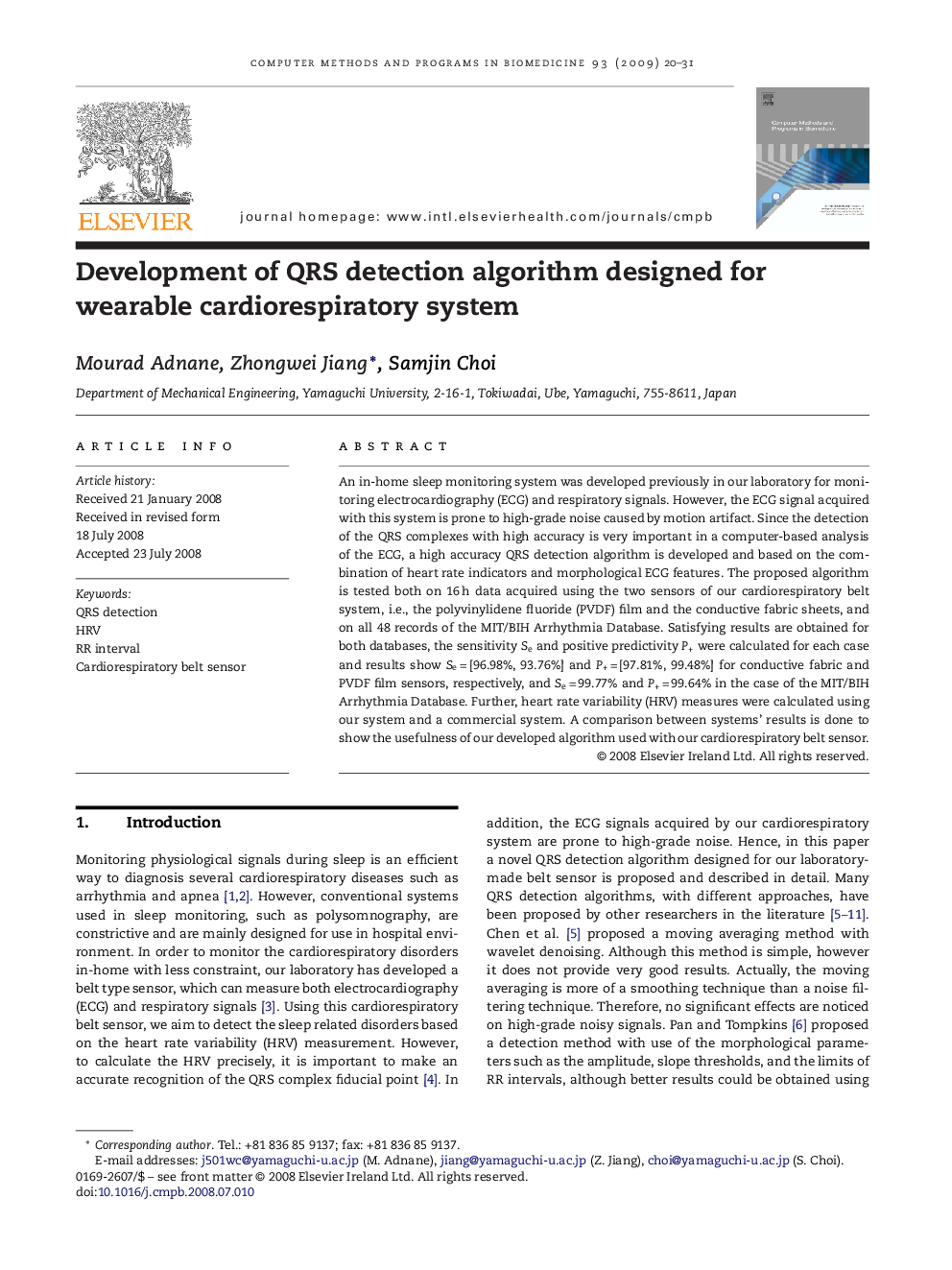| Article ID | Journal | Published Year | Pages | File Type |
|---|---|---|---|---|
| 469627 | Computer Methods and Programs in Biomedicine | 2009 | 12 Pages |
An in-home sleep monitoring system was developed previously in our laboratory for monitoring electrocardiography (ECG) and respiratory signals. However, the ECG signal acquired with this system is prone to high-grade noise caused by motion artifact. Since the detection of the QRS complexes with high accuracy is very important in a computer-based analysis of the ECG, a high accuracy QRS detection algorithm is developed and based on the combination of heart rate indicators and morphological ECG features. The proposed algorithm is tested both on 16 h data acquired using the two sensors of our cardiorespiratory belt system, i.e., the polyvinylidene fluoride (PVDF) film and the conductive fabric sheets, and on all 48 records of the MIT/BIH Arrhythmia Database. Satisfying results are obtained for both databases, the sensitivity Se and positive predictivity P+ were calculated for each case and results show Se = [96.98%, 93.76%] and P+ = [97.81%, 99.48%] for conductive fabric and PVDF film sensors, respectively, and Se = 99.77% and P+ = 99.64% in the case of the MIT/BIH Arrhythmia Database. Further, heart rate variability (HRV) measures were calculated using our system and a commercial system. A comparison between systems’ results is done to show the usefulness of our developed algorithm used with our cardiorespiratory belt sensor.
